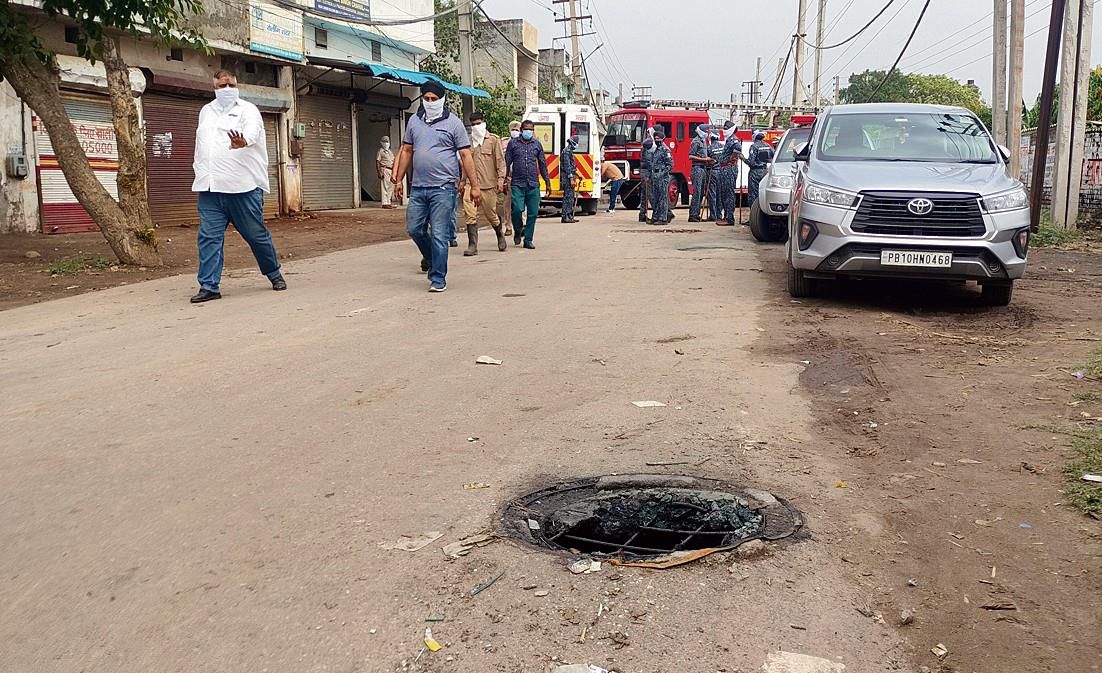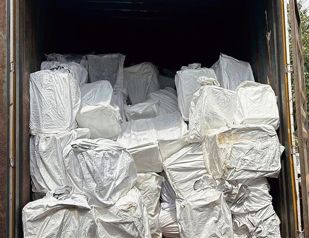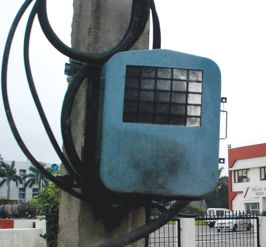
The sudden release of high concentration of hydrogen sulphide (H2S) gas from a roadside manhole on April 30 last had claimed 11 lives, including five of a family, and had left four injured in Giaspura. File photo
Nitin Jain
Ludhiana, March 14
The Centre’s joint probe panel has reported high organic load and high metal concentration in the wastewater flowing in the sewer lines at Giaspura in Ludhiana, where the sudden release of high concentration of hydrogen sulphide (H2S) gas from a roadside manhole on April 30 last had claimed 11 lives, including five of a family, and had left four injured.
The Central joint committee, comprising senior functionaries of the Union Ministry of Environment, Forests and Climate Change (MoEF&CC), Central Pollution Control Board (CPCB) and the Indian Institute of Technology (IIT) in Delhi, constituted by the National Green Tribunal (NGT) to conduct fresh independent probe into the Giaspura gas leak tragedy, has made this finding after analysing the results of physio-chemical parameters in wastewater samples collected from the manholes of main sewer and branched sewer lines on December 15, 2023.
In its 58-page inquiry report submitted before the NGT recently, a copy of which is with The Tribune, the joint probe panel submitted that it was evident from the monitored data that wastewater flowing in sewer contains high organic load as biochemical oxygen demand (BOD) ranges between 1,232 mg/l and 2,230 mg/l and sulphate ranged between 2,108 mg/l and 3,087 mg/l.
Similarly, analytical results for heavy metals in wastewater samples collected from the affected areas also revealed that the wastewater flowing in the sewer contained high metal concentration in terms of iron, which ranged between 9.3 mg/l and 1,562.3 mg/l, while zinc was found between 0.57 mg/l and 304.1 mg/l.
Making the concluding remarks on its findings based on the scientific analysis results, the Central joint inquiry committee submitted that the rate of hydrogen sulfide generation was proportional to the biochemical oxygen demand (BOD5) and excess sulfates were available.
“Based on analysis results of samples collected from manholes of main sewer and branched sewer near/in vicinity and radius of the affected area, it was found that sulfate value in sewer lines ranges between 2,149 mg/l and 3,087 mg/l and BOD concentration ranges between 1,235 mg/l and 2,230 mg/l. This condition facilitated a high rate of H2S generation,” it mentioned.
The Centre’s probe panel further stated that the domestic wastewater and solid waste discarded from meat shops located in the catchment was rich in sulfur-containing proteins.
“As the substrate of sulfate-reducing bacteria (SRB), the sulfur in sludge has been considered as a key factor affecting the competition between sulfate-reducing bacteria (SRB) and methane-producing bacteria (MPB), and sulfate reduction reaction increases with increasing the sulfur concentration,” the report read.
It noted that as per the analysis values of samples taken by the National Disaster Response Force (NDRF) team on April 30, 2023, the H2S valued at 1 pm had ranged from 174 ppm to 195 ppm between the points A to D, which had confirmed the heavy presence of this gas in the main sewer.
“Further, the colour of sludge deposited on inside of the manhole cover was found to be black as reported by representative of the Municipal Corporation (MC) to this committee during its visit, which confirms non-formation of methane, since methane formation develops white colour slime on inside of manhole cover,” the experts reported, while stating that the black colour can also be observed from the photograph of the manhole cover taken on the day of the incident provided by the local police.
Reporting the H2S formation from reaction of metal sulfide with mineral acids like dilute H2SO4, HCL and nitric acid, the Centre’s joint probe panel said the values sulphides stated in analytical results ranged between 3.2 mg/l and 6.4 mg/l, which were very low for producing such high amounts of H2S causing the fatalities.
“The pH of the wastewater flowing in sewer lines upstream and downstream of the affected area was found to be ranging between 6.2 and 6.5 during the visit of this committee on December 15, 2023. Such pH range is favourable for SRB to form maximum H2S,” the experts opined, while presenting the samples depicting the SRB growth against pH.
The NGT has, however, disposed of the matter while seeking fresh report on the common effluent treatment plant (CETP) in the area from the Punjab Pollution Control Board (PPCB).
Earlier, the NGT had on October 13 last “rejected” the report of the PPCB chairman-led joint inquiry committee terming it “not convincing” and had ordered a fresh independent probe into the sudden release of very high concentration of hydrogen sulphide (H2S) gas from a roadside manhole in Giaspura here on April 30 last, which had claimed 11 lives, including five of a family, and had left four injured.
NGT took suo motu notice
Taking a suo motu notice of the incident, the NGT principal bench, headed by the then chairperson Adarsh Kumar Goel and comprising then judicial member Sudhir Agarwal and executive member Dr A Senthil Vel, had on May 2 last ordered to constitute the panel to inquire and submit its report to the Tribunal on or before June 30. Taking up the matter on October 13 last, the NGT principal bench, headed by chairperson Prakash Shrivastava and comprising judicial member Sudhir Agarwal and expert member A. Senthil, had said the report had attributed the gas leak to the escape of gases from the sewer line, which “does not appear to be convincing”.
TIMELINE
April 30, 2023: Gas leak tragedy claimed 11 lives, left four injured
May 2, 2023: NGT take suo motu cognisance, orders probe
October 11, 2023: PPCB-led inquiry panel submits 397-page probe report
October 13, 2023: NGT “rejects” report, orders fresh investigation by CPCB-led committee
January 5, 2024: CPCB seeks more time, NGT grants four weeks
March 4: Central joint committee submits fresh inquiry report before NGT
March 5: NGT disposes of matter while seeking fresh report from PPCB
Holes in “rejected” probe
The NGT had pointed out major “anomalies” in the investigation conducted by the PPCB chairman-led joint panel, while ordering a fresh independent inquiry into the incident.
Join Whatsapp Channel of The Tribune for latest updates.




























